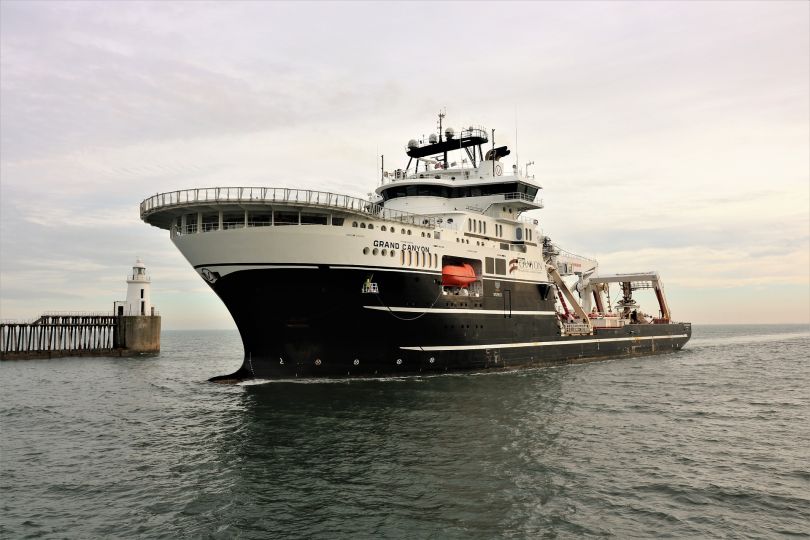When it comes to shaping the world’s marine infrastructure, few machines possess the grandeur and prowess of Offshore Construction Vessels (OCVs). These colossal floating marvels effortlessly navigate the open waters, serving as instrumental gateways to humanity’s conquest of the seas. As the world continues to expand its offshore ambitions, these engineering behemoths stand at the forefront, enabling the construction of towering wind farms, formidable oil rigs, and intricate underwater pipelines.
Imagine a symphony of steel and machinery, where immense cranes gracefully dance, and cutting-edge technology orchestrates the harmonious collaboration between man and nature. The OCVs, through their sheer magnitude and ingenuity, are the epitome of human innovation and determination.
What is an Offshore Construction Vessel?
The role of an offshore construction vessel (OCV) is to provide a platform for various offshore construction and maintenance activities in the oil and gas industry, as well as in the renewable energy sector. These vessels are designed and equipped to perform a wide range of operations in deep water and harsh environments:
- Installation of offshore structures – An OCV is used to install offshore structures such as oil and gas platforms, subsea pipelines, and wind turbine foundations
- Subsea construction – An Offshore Construction Vessel is equipped with advanced underwater tools and equipment to perform various subsea construction activities such as trenching, diving, and welding
- Heavy lifting – these remarkable vessels are equipped with cranes and winches with high lifting capacities to move heavy equipment and structures
- Accommodation – OCVs often have accommodation facilities to house offshore workers during construction, maintenance, or repair activities
- Maintenance and repair – OCVs can be used for maintenance and repair activities on offshore structures, including inspection, cleaning, and structural repair
5 Largest, state-of-the-art, OCVs in the Oil and Gas Industry
Pioneering Spirit – Owned by Allseas, the Pioneering Spirit is the world’s largest construction vessel. It is 382 meters long and 124 meters wide, with a lifting capacity of 48,000 tons.

photo © Allseas
Sleipnir – Owned by Heerema Marine Contractors, the Sleipnir is the world’s largest semi-submersible crane vessel. It is 220 meters long and 102 meters wide, with a lifting capacity of 20,000 tons.

photo © hmc.heerema.com
Saipem 7000 – Owned by Saipem, the Saipem 7000 is a semi-submersible crane vessel. It is 198 meters long and 87.4 meters wide, with a lifting capacity of 14,000 tons.
 photo © Saipem
photo © Saipem
Thialf – Owned by Heerema Marine Contractors, the Thialf is a semi-submersible crane vessel. It is 201 meters long and 88 meters wide, with a lifting capacity of 14,200 tons.

photo © Heerema Marine Contractors
Seaway Heavy Lifting’s Oleg Strashnov – Owned by Subsea 7, the Oleg Strashnov is a semi-submersible crane vessel. It is 183 meters long and 47 meters wide, with a lifting capacity of 5,000 tons.

Unleashing the Power of the Seas: Exploring the Mighty Offshore Construction Vessels
Offshore construction vessels are designed to support a variety of offshore activities, such as the installation of drilling platforms, subsea pipelines, and floating production units. They also have the ability to conduct repairs, maintenance, and decommissioning work, which is critical for extending the lifespan of offshore assets.
One of the key advantages of using offshore construction vessels is their versatility. They can be customized to meet the specific requirements of each project and are capable of performing multiple tasks in a single deployment, reducing the need for multiple vessels on site.
Engineering Symphony at Sea
However, offshore construction vessels are not without their challenges. They require skilled operators and crew members, and safety is always a top priority given the hazardous nature of offshore operations. In addition, the high capital costs associated with these vessels can be a barrier to entry for smaller companies.
Despite these challenges, the role of offshore construction vessels in the oil and gas industry is set to continue to grow in the coming years. As offshore operations move into deeper waters and become more complex, the demand for heavy lifting and installation capabilities will only increase. The offshore construction vessel industry will need to adapt and innovate to meet these demands, but their role in the offshore sector is essential for the continued growth and success of the oil and gas industry.

photo © pixabay

Comments
One response to “5 Largest Offshore Construction Vessels (OCV)”
[…] and safety (HSE) considerations play a vital role in the renewable offshore industry. Workers face unique challenges and risks in this environment, including harsh weather […]